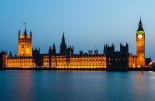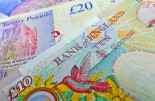Ethenea: How monetary policy independence is being eroded
Ethenea: How monetary policy independence is being eroded

‘The question is no longer whether the US monetary policy system will change, but how quickly and what consequences this will have for the capital markets,’ comments Jörg Held, Head of Portfolio Management. ‘The fact is that the markets are already trading on this change long before it is openly discussed.’
The Federal Reserve (Fed) is currently undergoing a paradigm shift. What began as a skirmish on social media and expanded into selective political influence has developed into a systemic question of monetary policy power relations.
‘The market logic is simple: lower interest rates increase valuation multiples, reduce refinancing costs and weaken the dollar. These effects correspond precisely to Trump's explicitly stated economic policy preferences. Confidence in monetary policy independence is thus not only weakened, but becomes a risk within the financial system,’ Held describes the situation.
The macro backdrop
The power struggle between the current US administration and the Fed could soon reach its climax. The Trump team is pushing for a more significant easing of the federal funds rate (currently 3.50 to 3.75 per cent) in order to support the economy, refinancing and employment. Elsewhere, the Fed is trying to defend its monetary policy independence and credibility. This is not about a single decision, but about the question of who will determine the course of US monetary policy in the future: the central bank or the government. Treasury Secretary Scott Bessent has narrowed down the list of candidates to succeed Jerome Powell as Fed chair to five people who, despite their different profiles, share a common stance: the conviction that permanently lower interest rates are necessary for both economic and fiscal policy.
‘Stephan Miran has been the first member of the executive branch to sit on the Fed Board since September 2025. Miran argued back in March 2024 that the Fed's independence was exaggerated and overestimated in economic terms,’ explains Held. ‘This brings the conflict between monetary policy autonomy and political calculation into its decisive phase. The coming weeks will show whether the Fed will continue to be perceived as an independent institution or whether it will de facto become part of the White House's strategic agenda.’
What this means for investors
For investors, this means that the base scenario of monetary policy easing under political leadership is highly likely. If the Supreme Court confirms Lisa Cook's dismissal and the administration already appoints a ‘shadow chair’, Held believes that the institutional pressure on Jerome Powell will be so great that it is realistic to expect him to resign before the end of his term. ‘A loyal successor would likely implement the Miran agenda: a reduction in the Fed Funds Rate to around 2.25 per cent by the end of the year, accompanied by a possible resumption of quantitative easing measures to prevent yield increases at the long end.’ The result: ‘The yield curve would flatten in a targeted manner, while falling nominal yields would support both bond and equity markets.’
At the same time, Held expects inflation concerns to become less relevant: ‘Tariff-related price pressures will remain isolated, while AI-driven efficiency gains will strengthen the supply side and lower long-term inflation expectations. This will result in falling real interest rates.’ For investors, this results in a clear positioning along structural disinflation, which overshadows short-term inflationary effects. ‘This gives artificial intelligence not only technological but also macroeconomic significance: it changes the production function – and thus the decision-making logic of monetary policy,’ explains the ETHENEA strategist.
Scenario: Goldilocks
Under these conditions, ten-year Treasuries could trend towards 3.0 per cent or lower – an environment with the rare simultaneity of rising bond and stock prices. The dollar is also likely to weaken moderately, supported by the political focus on export competition and global market share. ‘If Trump's strategy works, it would create a “Goldilocks” scenario in the short term: low interest rates, rising markets, moderate inflation. Unlike previous cycles, however, this balance would not be credit-driven, but supported by productivity gains through technological disruption,’ says Held. The probability of the key interest rate falling to between 2.0 and 2.5 per cent by the end of 2026 is high. ‘The key factor is that any potential increases in yields will be dampened by a reactivation of quantitative easing policy.’










